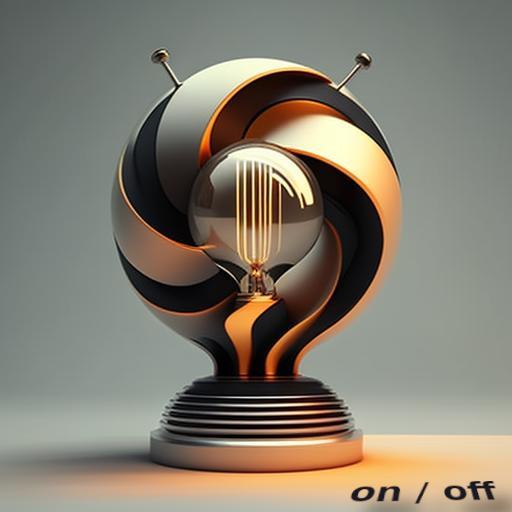


Lighting plays a crucial role in shaping the atmosphere of a space, influencing mood, functionality, and aesthetics. Whether you're revamping your home, designing a commercial space, or embarking on a lighting project, understanding the nuances of lighting is essential. This comprehensive guide offers valuable insights and tips for navigating the world of lighting design and fixtures, helping you create environments that are both functional and visually captivating.
Understand the Different Types of Lighting:
Lighting serves various purposes, and understanding the different types can help you achieve a well-balanced design. Ambient lighting provides overall illumination, task lighting is focused on specific activities, and accent lighting highlights architectural features or decor. A combination of these types creates a layered and dynamic lighting scheme.
Consider the Color Temperature:
The color temperature of light influences the ambiance of a space. Warm tones (2,700-3,000 Kelvin) create a cozy and inviting atmosphere, while cooler tones (4,000 Kelvin and above) contribute to a more energetic and modern feel. Choose color temperatures based on the mood you want to evoke in each area.
Embrace Natural Light:
Whenever possible, maximize the use of natural light. Position windows strategically, use light-colored window treatments, and incorporate reflective surfaces to amplify natural sunlight. Natural light not only enhances visual comfort but also promotes a connection to the outdoors.
Layer Lighting for Versatility:
Layering lighting involves combining different fixtures to create a versatile and adaptable environment. This may include a combination of overhead fixtures, task lighting such as desk lamps, and accent lighting for artwork or architectural features. This approach allows you to adjust the lighting to suit different activities and moods.
Focus on Energy Efficiency:
With an emphasis on sustainability, choose energy-efficient lighting options. LED (Light Emitting Diode) bulbs consume less energy and have a longer lifespan compared to traditional incandescent bulbs. Energy-efficient choices not only reduce environmental impact but also result in long-term cost savings.
Pay Attention to Fixture Scale:
Consider the scale of fixtures to the space they occupy. Oversized fixtures can overwhelm a room, while undersized ones may not provide sufficient illumination. Strike a balance by choosing fixtures that complement the size and scale of the space.
Create Focal Points with Statement Fixtures:
Introduce statement fixtures as focal points in your lighting design. Whether it's a chandelier, pendant light, or unique floor lamp, these fixtures can add character and visual interest to a room. Use them strategically to draw attention to key areas.
Dimmers for Flexibility:
Incorporate dimmer switches to add flexibility to your lighting design. Dimmers allow you to adjust the intensity of the light, creating different atmospheres for various occasions. They also contribute to energy savings by reducing overall power consumption.
Pay Attention to Lighting Direction:
Consider the directionality of light to highlight specific elements. Upward lighting can emphasize architectural features, while downward lighting is effective for task-oriented areas. Cross-illumination, where light sources intersect, creates a balanced and visually appealing effect.
Harmonize with Interior Design:
Coordinate lighting fixtures with the overall interior design scheme. Consider the style, materials, and colors of your furnishings and decor when selecting lighting fixtures. Cohesiveness in design enhances the visual appeal of the entire space.
Outdoor Lighting Matters:
Extend your lighting design to outdoor spaces. Well-placed outdoor lighting enhances safety, security, and the aesthetic appeal of your property. Use pathway lights, wall sconces, and landscape lighting to create a welcoming exterior.
Seek Professional Advice:
For complex lighting projects or if you're unsure about the best approach, seek advice from lighting professionals or interior designers. Their expertise can help you create a tailored lighting design that meets your specific needs and enhances the overall functionality and aesthetics of your space.
The Lighting refers to the use of artificial light sources to illuminate indoor or outdoor spaces. There are various products and categories in the lighting sector, including:
Incandescent Bulbs: These are the traditional light bulbs that produce light by heating a filament wire.
Fluorescent Bulbs: These bulbs use gas and a phosphor coating to produce light and are more energy-efficient than incandescent bulbs.
LED Lights: These lights use a semiconductor to produce light and are even more energy-efficient than fluorescent bulbs. They are also more durable and have a longer lifespan.
Smart Lighting: These are lighting systems that can be controlled through a smartphone app, voice commands, or other means. They may include features like dimming, color changing, and scheduling.
Outdoor Lighting: This includes lighting for pathways, streets, parking lots, and other outdoor spaces.
Decorative Lighting: This includes lighting for interior design purposes, such as chandeliers, wall sconces, and table lamps.
Specialty Lighting: This includes lighting for specific applications, such as medical lighting, automotive lighting, and stage lighting.
The lighting sector encompasses a wide range of products and applications and is constantly evolving as new technologies and designs emerge.
There are various methods for producing lighting bulbs, but the most common method involves the following steps:
Glassblowing: The bulb's outer glass envelope is formed by blowing a glass tube into a mold. The mold gives the bulb its shape and size.
Filament Production: A tungsten wire is coiled and cut to the appropriate length for the bulb's filament. The wire is then treated to remove impurities and make it more durable.
Mounting: The filament is mounted on a small glass support structure, known as a stem or lead-in wire, which is then attached to the bulb's base.
Evacuation and Filling: The bulb is placed on a machine that removes air from the bulb, creating a vacuum. Once the air has been removed, the bulb is filled with an inert gas, such as argon or nitrogen, which helps prevent the filament from burning out too quickly.
Sealing: The bulb is sealed to prevent air from entering and damaging the filament. The base is attached to the envelope by melting and fusing the glass together.
Testing: The finished bulbs are tested to ensure that they meet the required specifications for brightness, color temperature, and other factors.
The production of lighting bulbs involves a combination of specialized equipment, skilled labor, and careful quality control to produce reliable and long-lasting products.
The production of LED lights involves several key steps, including:
Epitaxy: This involves growing a thin layer of semiconductor material, typically gallium nitride (GaN), on a substrate, such as sapphire or silicon carbide. This creates the base material for the LED.
Wafer Processing: The wafer is then processed to create individual LED chips, which involves using photolithography and etching to create the necessary features, such as the p-n junction and contact pads.
Packaging: The individual LED chips are then packaged in a plastic housing, which helps protect the chip and provides a way to connect the LED to a power source. The housing also contains a reflector to help direct the light.
Testing: The finished LED lights are then tested to ensure that they meet the required specifications for brightness, color temperature, and other factors.
Assembly: The LED lights can be assembled into various products, such as light bulbs, strips, and panels, for use in a variety of applications.
The production of LED lights involves a combination of advanced semiconductor technology, precision manufacturing processes, and careful quality control to produce energy-efficient and long-lasting lighting solutions.
There are several key innovations in lighting that are currently shaping the industry, including:
Smart Lighting: Smart lighting systems allow users to control their lighting through a smartphone app, voice commands, or other means. These systems often include features like dimming, color changing, and scheduling, and can be programmed to respond to different stimuli, such as occupancy sensors or ambient light sensors.
LED Technology: LED technology is rapidly advancing, with more efficient and powerful LED chips being developed all the time. This is leading to brighter, more energy-efficient lighting products that can last for decades with minimal maintenance.
OLED Technology: Organic light-emitting diodes (OLEDs) are a relatively new technology that offers several advantages over traditional LED lighting. OLEDs are thinner, more flexible, and can produce more natural-looking light, making them ideal for use in a variety of applications, including architectural lighting and displays.
Human-centric Lighting: This involves using lighting to support human health and well-being by mimicking the natural rhythms of daylight. Human-centric lighting systems can help regulate the body's circadian rhythm, improve mood and productivity, and reduce the risk of certain health conditions, such as seasonal affective disorder.
Li-Fi: Li-Fi is a new wireless communication technology that uses LED light bulbs to transmit data. This technology has the potential to revolutionize the way we access the internet and communicate with each other, as it can provide faster and more secure data transmission than traditional Wi-Fi.
Navigating the world of lighting design and fixtures involves a delicate balance of functionality, aesthetics, and technological considerations. By incorporating these tips into your approach, you can create illuminated spaces that not only meet practical needs but also evoke the desired emotions and ambiance. Embrace the creative possibilities of lighting, and let your spaces come alive with the perfect blend of form and function.
Warm regards,

We use cookies
We use cookies and other tracking technologies to improve your browsing experience on our website, to show you personalized content and targeted ads, to analyze our website traffic, and to understand where our visitors are coming from. Privacy Policy.